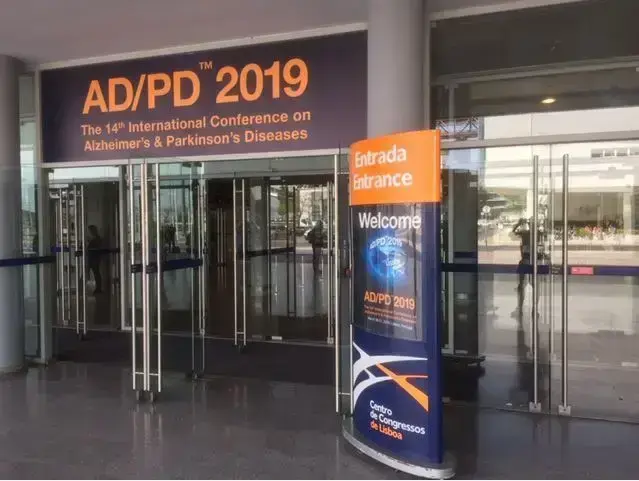The phase 3 trials in Alzheimer’s Disease teach us how to improve selection of patients so that we are more likely to detect signals of efficacy. Other lessons learned are that biomarkers have their limitations, and that successful intervention is likely to involve a combination of therapies that varies with stage of disease.
알츠하이머병 임상 3상에서는 치료 효능을 보여주는 징후들을 더 잘 파악하기 위해 어떻게 환자 선별 방식을 개선해야 할지에 관해 시사점을 제공하고 있습니다. 또한 바이오마커의 사용만으로는 한계가 있으며, 성공적인 치료를 위해서는 질병 단계별로 다양한 병용요법을 고려해야 한다는 교훈도 얻을 수 있습니다.
With news that another two phase 3 trials in Alzheimer’s Disease stood little chance of meeting their endpoints and have been abandoned, it might have been difficult to resist a sense of gloom. But Rachelle Doody (Roche/Genentech, Basel, Switzerland) focused on the positive in her opening plenary at AD/PD 2019.
2건의 알츠하이머병 임상 3상이 기대했던 평가변수를 만족할 가능성이 희박하며 개발이 중지되었다는 소식이 전해지면서 회의적인 분위기가 드리워졌습니다. 하지만 레이첼 두디(Rachelle Doody, 스위스 바젤 Roche/Genentech) 박사는 AD/PD 2019의 개회 총회에서 두 임상시험의 긍정적 측면에 주목했습니다.
We all know we are not where we want to be in the treatment of AD, she admitted. But we should not ignore the fact that we have learned a lot about how to select patients to improve the chances of detecting a positive signal. That is one thing that has worked. Another thing that works is collaborate and exchange ideas that will lay the foundations for a further round of clinical trials.
두디 박사는 다음과 같이 말했습니다. “우리 모두는 현재 알츠하이머병 치료가 원하는 만큼 진전되지 않고 있다는 사실을 알고 있습니다. 그러나 긍정적인 징후를 보다 잘 파악하기 위해 어떻게 환자를 선별해야 하는지 알아가는 데 많은 성과가 있었다는 점을 간과하지 말아야 합니다. 이것이 바로 한 가지 성과입니다. 또 다른 성과는 우리의 협력과 아이디어 공유가 다음 단계의 임상시험을 위한 초석이 될 것이라는 점입니다.”
Meetings like AD/PD lay the groundwork for further trials
AD/PD 등의 학회 개최로 임상시험 발전의 기반 마련
Efforts to use disease biomarkers from phase 2 trials as surrogates for efficacy have had mixed results. We have learned that biomarker changes in early studies showing dose-dependent reductions in plasma or CSF concentrations of amyloid beta, for example, are not in themselves sufficient to support phase 3 trials.
임상 2상에서 사용했던 질병 바이오마커를 유효성의 대리평가변수(surrogates)로 이용하려는 노력은 다양한 결과로 이어졌습니다. 가령, 초기 연구에서 용량의존적으로 혈장 또는 CSF의 아밀로이드 베타 농도가 감소함을 보여주었던 바이오마커 변화가 그 자체로는 임상 3상을 뒷받침하기에 충분하지 않음을 확인하였습니다.
Biomarkers are a mixed blessing
바이오마커는 장단점을 모두 가지고 있습니다
The markers are of disease pathology, and not directly related to cognitive outcomes. Patients with the same level of marker may respond differently to treatment; and changes in the various markers – such as CSF tau and tau imaging – may not co-vary.
마커는 병리현상일 뿐, 인지기능 결과와는 직접적인 관련이 없습니다. 마커가 동일 수준인 환자들도 같은 치료에 다르게 반응할 수 있으며, CSF-tau와 tau 이미징 같은 다양한 마커들이 서로 함께 변하지(co-vary) 않을 수도 있습니다.
Another example is neurofilament light, NFL, a marker that may change in response to acute inflammation, or cardiac events, as well as the chronic process of neurodegeneration, and may be unreliable as a marker of progression in AD.
또 다른 예로 신경미세사(NFL)를 들 수 있는데, 이 마커는 급성 염증이나 심장 문제, 만성 신경 퇴행으로 인해 변할 수 있어, 알츠하이머병 진행을 판별하는 마커로는 신뢰하기 어려울 수 있습니다.
However, biomarkers may be more helpful in patient selection and in providing evidence of target engagement, Dr Doody suggested.
그러나 두디 박사에 따르면, 바이오마커들의 사용은 환자를 선별하고 표적에 대한 약물 작용 여부(target engagement)를 확인하는 데 도움이 됩니다.
Pace of progression can be predicted by preceding rates of decline, improving the chances of showing superiority over placebo
선행 퇴행 속도로 질병 진행 속도를 예측해 위약 대비 우수한 치료 효과를 입증할 수 있는 가능성 증대
One problem experienced in clinical trials is that many patients assigned to placebo show only slow cognitive decline. Around 25% experience less than a one point decline on ADAS-cog over 18 months. Placebo patients also show increasing variability in scores as follow-up lengthens. For both reasons, it may be more difficult than we had assumed to show the benefit of a modestly effective intervention.
임상시험에서 발견된 한 가지 문제점은 많은 위약 투여 환자들의 인지 감퇴가 너무 서서히 진행되었다는 사실입니다. 위약 투여 환자 중 약 25%가 18개월 동안 ADAS-cog(알츠하이머병 평가 척도) 하락폭이 1 포인트 미만이었습니다. 또한 추적 관찰이 지속됨에 따라 위약 투여 환자들의 평가 점수 변동성이 높아지기도 했습니다. 이러한 결과를 보았을 때, 적당히 효과적인 중재 치료를 하는 것에 따른 이점을 입증하기란 예상보다 어려울 것으로 보입니다.
A drug with greater efficacy would solve the problem, of course. So too would increasing the number of patients enrolled in the trial. But a more practical solution is to recruit people who will show rapid deterioration.
물론 효능이 높은 약물로 이 문제를 해결할 수 있습니다. 임상시험에 더 많은 환자를 참여시켜서 문제를 해결할 수도 있습니다. 그러나 보다 현실적인 해결책은 질병 악화가 빠르게 진행될 환자를 모집하는 것입니다.
This can be achieved by including those who have already shown a fast rate of decline. A model based on the database of the Alzheimer’s Disease Neuroimaging Initiative shows that fast progression and conversion from mild cognitive impairment to AD can be predicted based on baseline Clinical Dementia Rating -- Sum of Boxes score, Functional Activities Questionnaire, and hippocampal volume.1
이미 빠르게 악화되고 있는 환자들을 대상으로 임상시험을 진행하면 문제를 해결할 수 있을 것입니다. 알츠하이머병 신경 촬영 연구 DB 기반의 한 모델을 살펴보면, 가벼운 인지적 장애에서 알츠하이머병으로의 빠른 진행 및 전환을 예측하는 근거로서 Clinical Dementia Rating -- Sum of Boxes score의 기저치, 기능활동질문(Functional Activities Questionnaire), 해마 크기 등을 활용할 수 있습니다.1
Risk factors identified from epidemiology have not translated into treatments but do inform prevention
역학(epidemiology)적 관점으로 발견되는 위험 인자는 치료보다는 예방을 위한 것
Epidemiology also an uncertain guide to intervention
역학 역시도 중재 치료에 대한 가이드로서 확실한 것이 아닙니다
Insights from epidemiology have also proved an uncertain guide. We know from drug trials that targeting high levels of cholesterol and insulin, or low levels of estrogen, does not benefit people who already have AD. That said, in people who are at high risk of developing the disease but have normal cognition, there may be benefit in multidimensional intervention.
역학적 관점으로 얻는 통찰도 중재 치료에 대한 가이드로서는 확실한 것이 아님이 밝혀졌습니다. 높은 콜레스테롤 및 인슐린 수치 또는 낮은 에스트로겐 수치 등을 표적으로 삼는 것은 이미 알츠하이머병이 진행된 환자에게 도움이 되지 못한다는 사실이 약물 실험을 통해 드러났습니다. 그러나 알츠하이머병이 진행될 위험은 높지만 아직 인지 능력이 정상적인 사람들에게 다차원 중재(multidimensional intervention) 치료는 유용하게 적용될 수 있습니다.
The FINGER study provided evidence that addressing metabolic and vascular risk factors such as diet and exercise – plus cognitive training – reduces cognitive decline over two years.2 Executive function, processing speed and memory were superior in the intervention group. So too was health-related quality of life. However, only longer follow-up will show whether this comprehensive intervention delays onset of dementia.
FINGER 연구는 식이 요법, 운동, 인지 훈련 등을 통한 대사 및 혈관 위험 인자 치료는 인지력 감퇴 속도를 2년 이상 늦출 수 있다는 주장에 대한 증거를 제시했습니다.2 개입 치료 환자군은 실행 능력, 처리 속도 및 기억력에서 우수한 결과를 보였으며, 건강 관련 삶의 질 수준도 높았습니다. 단, 이러한 포괄적 개입 치료로 치매 발병을 지연시킬 수 있는지는 지속적인 후속 실험을 통해서만 확인할 수 있을 것입니다.
It is almost certain that the effective management of AD will require the combination of treatments and brain protection strategies – which may include modulating the activity of the microglia. And it is also almost certain that the optimum approach will differ with each stage of the disease.
이제 알츠하이머병을 효과적으로 관리하려면 소교 세포(microglia) 활동 조절을 포함한 다양한 치료법 및 뇌 보호 전략의 조합이 필요하다는 것이 거의 확실해졌습니다. 또한 질병의 진행 단계별로 최적의 접근법이 달라진다는 점도 거의 명백해졌습니다.
Speaking earlier in the opening session, Roger Nitsch (University of Zurich, Switzerland) said that we all know how hard it is to develop drugs for diseases as intractable and merciless as Alzheimer’s and Parkinson’s. Yet we regroup and press on.
로저 닛슈(Roger Nitsch, 스위스 취리히대학교) 교수는 개회 총회에서 “우리 모두는 알츠하이머병이나 파킨슨병과 같이 무자비한 난치성 질병을 위한 치료제 개발이 매우 어렵다는 사실을 잘 알고 있다”며, “그럼에도 불구하고 모두가 다시 마음을 모아 연구를 계속해야 한다”고 덧붙였습니다.
We are all engaged in putting together small parts of a very large puzzle said Manfred Windisch (Grambach, Austria), a joint organizer of the meeting.
AD/PD 2019의 공동 주최자 만프레트 빈디슈(Manfred Windisch, 오스트리아 그람바흐)는 “우리 모두가 거대한 퍼즐의 작은 조각들을 함께 맞추는 것”이라고 말했습니다.
본 자료는 Global Lundbeck 의학부에서 선별한 콘텐츠이며, 한국룬드벡의 의견과 다를 수 있습니다




